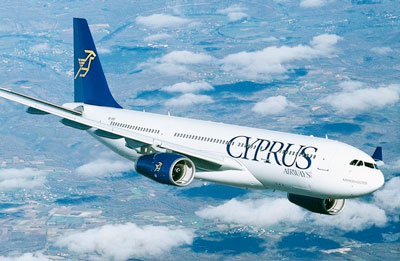Cyprus Airways through the eyes of potential investors

The sale process of Cyprus Airways (CAIR) has been put on hold waiting for the results of the European Commission investigation on the legality of the aid package of EUR 103m, which was provided by the Cyprus government to the distressed national airline in December 2012 and January 2013. The highest profile bidders are currently Ryanair and Aegean Airlines, who also happen to be the two most profitable European airlines in the first six months of 2014. How might potential investors view Cyprus Airways?
HOW ATTRACTIVE (OR NOT) IS CY TO AN INVESTOR?
Generally speaking, when acquiring a company, potential investors conduct a thorough investigation which includes market research and financial due diligence. The three pillars of the financial evaluation are:
1. Sustainability in profits

For a successful sale, the seller should be able to offer a business that is promising steady revenues and a certain earnings stream. The make-up of revenues (customers, products, regions, countries, etc) will be considered. “Is there growth in revenues and is it likely to continue? Are the profit margins acceptable and consistent?” As Figure 1 shows, CAIR has been experiencing a steady fall in both revenues and profits from 2009, and even during 2005-09 when revenues were growing, the company performed very poorly in terms of profitability. Its costs of sales and operating expenses escalated to enormous proportions, not consistent with the industry averages. As the recent professional report by CAPA (Centre for Aviation) comments, “Cyprus Airways has a significantly higher CASK (cost per available seat kilometre) than all of its biggest competitors: Aegean, Monarch, EasyJet and Ryanair”. Transaero is also a major competitor, but CAPA didn’t have a CASK estimate for it.
While thin profit margins are common among traditional airlines, and in fact Aegean had experienced losses in 2010-2012, this is usually explained by high depreciation charges in this capital intensive industry. Aegean, which in 2011-2012 underwent restructuring and made massive investments in its fleet, it set out on a path of growth which has now resulted in profit. The path of CAIR has been quite different.
2. Sufficient asset base
A strong Balance Sheet is a much bigger consideration than profits. Investors are not easily scared by losses on the Income Statement. But they want to see a solid asset base. This is what matters MOST in any acquisition deal because this defines the future potential of a company to generate revenue and profits. CAIR’s balance sheet has been shrinking at a fast pace: the company has been selling off assets, airplanes, airport slots and buildings. Already in 2011, a report by the Association of European Airlines (AEA) described our national carrier as “the fastest-shrinking airline in Europe”. The balance sheet from the 2011 Annual Report (the latest audited report) showed negative equity of EUR 16mln, which meant that total liabilities exceeded its total assets by EUR 16mln. According to such balance sheet, even if CAIR sold all of its assets in 2011, it would still owe EUR 16mln to its creditors. As a result of a weakening asset base, starting from 2011 there has been a significant and continuous annual drop in passenger traffic (Figure 2). 
As if this is not a scary enough picture for a potential investor, there may be more bad news on the way. The European Commission may not approve the restructuring plan and the state aid package provided to CAIR in December 2012 and January 2013. As Minister of Finance Harris Georgiades warned (Cyprus Mail, 5 July 2014), if that happens, the national airline will face bankruptcy and will close down. No investor would want such a burden on the company’s balance sheet. Yet the risk of such a decision is very high since the Commission already approved restructuring aid for CAIR in 2007 and, according to EU rules, restructuring or rescue aid may only be provided once in a 10 year period.
3. Sustainable operating cash flow
Activities on the Cash Flow Statement of a company are separated into operating, investing and financing. Overall, they result in a certain net change in cash over the accounting period. What matters to potential investors is the operating cash flow, which should be positive. This is a more objective way than profits to identify if the company’s main business is sustainable and robust. The CAIR Cash Flow summary for 2010-2011 showed a highly distressed company which was unable to generate cash flow via its main business and was massively selling off its assets (Figure 3). By contrast, Aegean during the same years, being also a loss-making company then, showed a highly positive operating cash flow (meaning that its main business was healthy) and highly negative investing cash flow (meaning that they were increasing their asset base for the future growth).
By contrast, Aegean during the same years, being also a loss-making company then, showed a highly positive operating cash flow (meaning that its main business was healthy) and highly negative investing cash flow (meaning that they were increasing their asset base for the future growth).
THE ONLY HOPE OF LONG TERM SURVIVAL
The dreadful financial situation and the dim future prospects of the national carrier have been in the spotlight since June this year. The sale of the last Heathrow slot, which caused CAIR to re-direct passengers to Stansted, was highly criticised by the airline pilots union PASYPI and the political opposition parties, AKEL in particular. “Selling the timeslot would be catastrophic for the company’s future” (Cyprus Mail, 3 June 2014). Further harsh criticism followed in July when the government began its active search for a strategic investor.
Considering that despite the whole series of restructuring plans, CAIR has been a loss-making entity since 2009, with a rapidly shrinking asset base, a growing mount of debt, and the negative operating cash flow, it is obvious that the government simply has no other choice left. Continuing to cover the losses at the expense of the taxpayers is no longer an option. The recent professional report by CAPA (Centre for Aviation), published on September 9, and titled “Cyprus Airways: Investor Needed as Market Share Evaporates”, concluded that “The restructuring is not enough to sustain Cyprus Airways and the sale to a strategic investor looks to be its only hope of longer term survival. If this turns out to be either of Ryanair or Aegean, Cyprus Airways may face a brighter future.”
Source: Financial Mirror – Cyprus Airways through the eyes of potential investors





























